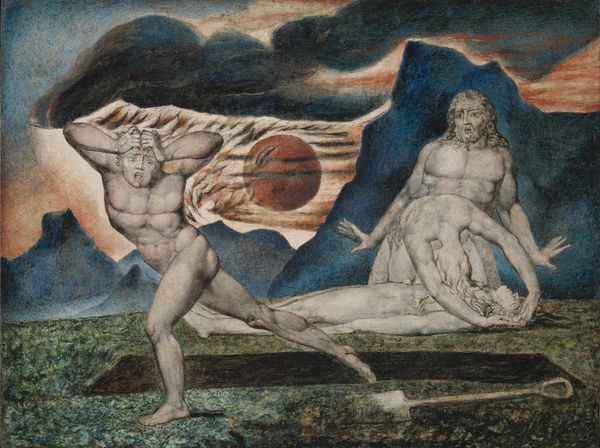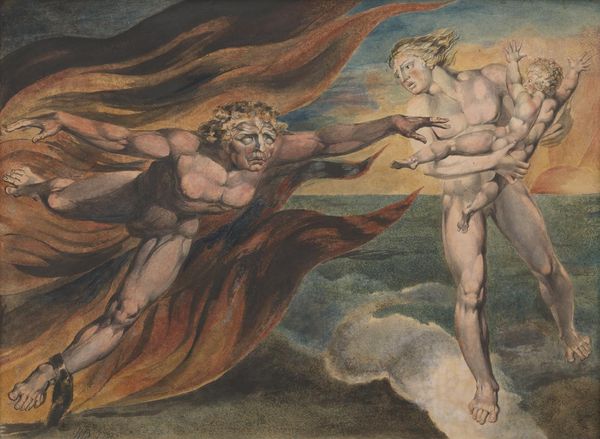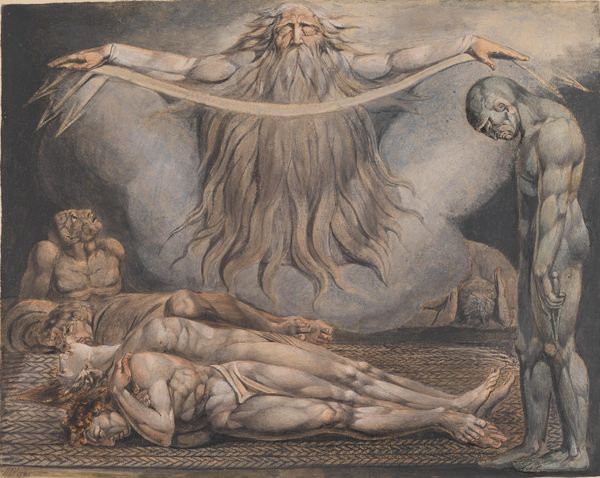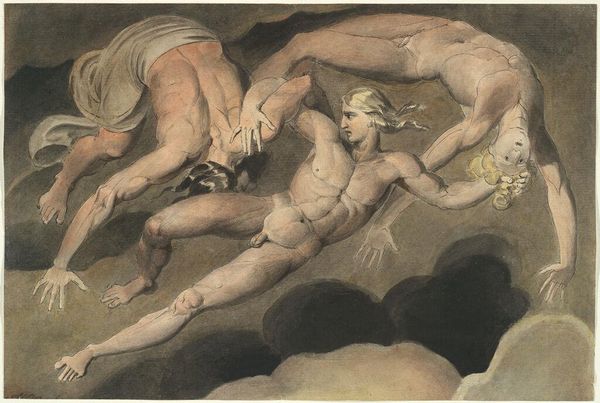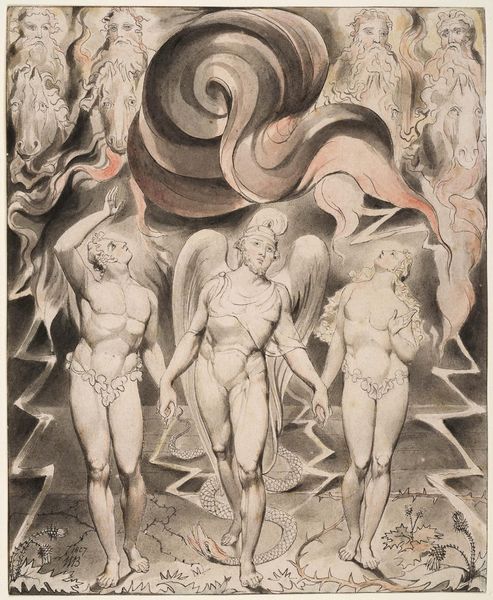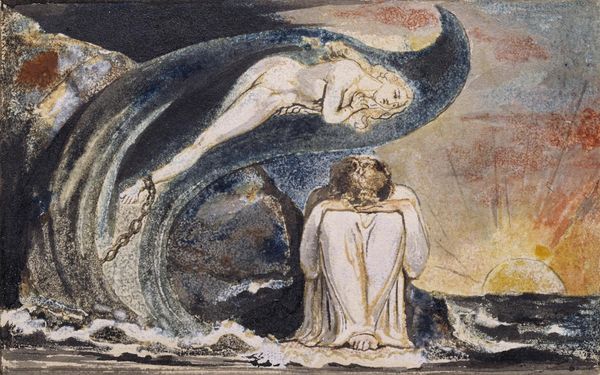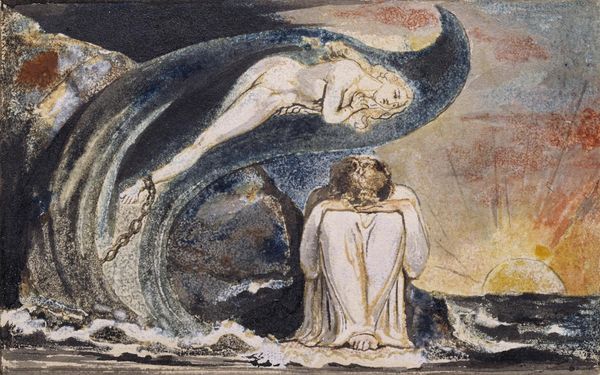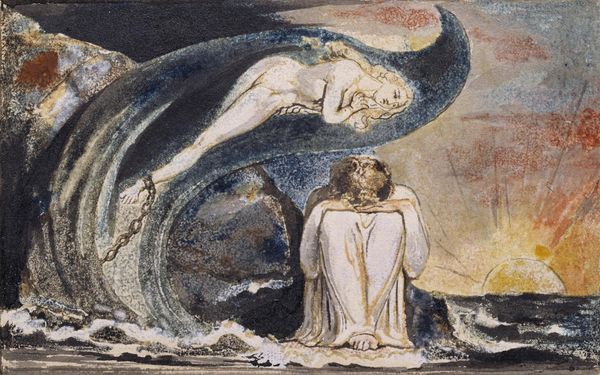
Dimensions: support: 214 x 162 mm frame: 382 x 324 x 50 mm
Copyright: NaN
Editor: Here we have William Blake’s “The Ghost of a Flea” from the Tate Collections. The figures are so dynamic and dramatic. What’s your interpretation of it? Curator: It screams of Blake's radical vision. How does the "flea," something so minute, become monstrous? It reflects the anxieties of his era about social hierarchies, the oppressive structures of power, and the artist's role within those systems. Do you see how the flea becomes a symbol of unchecked power? Editor: That’s fascinating! I hadn’t considered the social commentary. Thanks for the insight! Curator: Indeed, Blake consistently challenged the status quo through his art and poetry. It’s a conversation about resisting dominant narratives, a theme ever resonant.
Comments
tate 6 months ago
⋮
http://www.tate.org.uk/art/artworks/blake-the-ghost-of-a-flea-n05889
Join the conversation
Join millions of artists and users on Artera today and experience the ultimate creative platform.
tate 6 months ago
⋮
John Varley – an artist, astrologer and close friend of Blake – reported in his Treatise on Zodiacal Physiognomy (1882) that Blake once had a spiritual vision of a ghost of a flea and that ‘This spirit visited his imagination in such a figure as he never anticipated in an insect.’ While drawing the spirit it told the artist that all fleas were inhabited by the souls of men who were ‘by nature bloodthirsty to excess’. In the painting it holds a cup for blood-drinking and stares eagerly towards it. Blake’s amalgamation of man and beast suggests a human character marred by animalistic traits. Gallery label, May 2011
